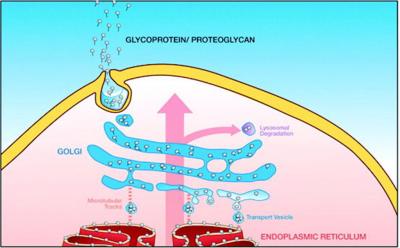They say their 'lab-on-a-chip' device could lead to a faster and safer method for producing heparin, the widely used anticoagulant or blood thinner, the researchers note. The study is published in the Journal of the American Chemical Society.
The Golgi organelle is named for Camillo Golgi, the Italian scientist and Nobel Prize winner who discovered the structure in 1898.
It is composed of a network of sacs, stacked like a deck of playing cards, located inside cells. In the new study, Robert Linhardt and colleagues point out that Golgi bodies are one of the most poorly understood organelles (specialized structures inside cells) in the human body.
Scientists already know, however, that the organelles play a key role in producing heparin, a substance that helps prevent clotting.
The researchers describe development of a prototype lab-on-a-chip device that closely mimics the natural Golgi apparatus. They showed in lab tests that the device could quickly and efficiently produce heparin. It did so in an assembly-line fashion using a combination of enzymes, sugars and other raw materials and demonstrated that the substance has a strong clot-fighting potential. In the future, an "artificial Golgi" could lead to a faster and safer method for producing heparin, the scientists suggest.

Researchers have developed an artificial version of the Golgi organelle, shown in this illustration of a cell cross-section. The device could lead to a better method for producing heparin, they say. Credit: The American Chemical Society
Article: Jeffrey G. Martin, Megha Gupta, Yongmei Xu, Srinivas Akella, Jian Liu, Jonathan S. Dordick , Robert J. Linhardt, 'Toward an Artificial Golgi: Redesigning the Biological Activities of Heparan Sulfate on a Digital Microfluidic Chip', J. Am. Chem. Soc., Article ASAP DOI: 10.1021/ja903038d






Comments